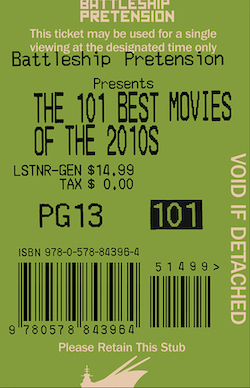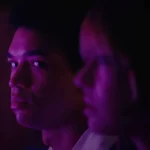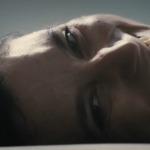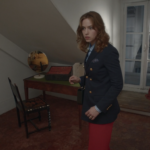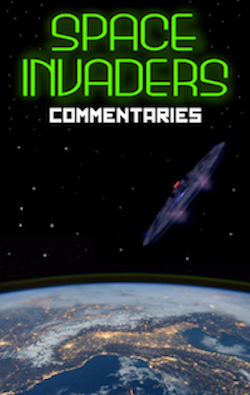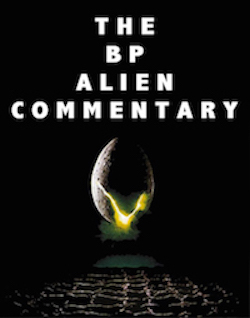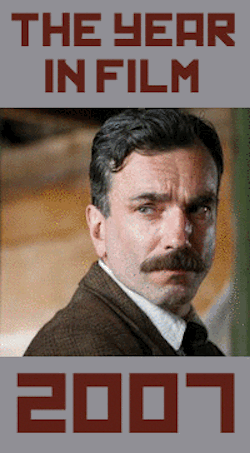The Vast of Night: We Are Controlling Transmission, by David Bax
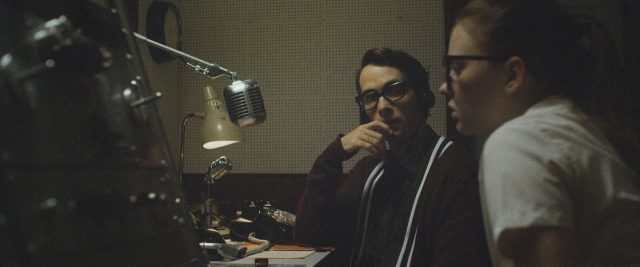
In the entrancing, energizing opening sequence of Andrew Patterson’s The Vast of Night, Everett (Jake Horowitz), the young man from the local radio station, makes his way through seemingly every nook and cranny of a 1950s high school gymnasium, instructing the amateur broadcasters on how to record that night’s basketball game, reconfiguring the school band and offering to help fix the building’s unpredictable electrical grid, all while dodging in and out of the team’s warm-ups. His relaxed, irons-in-all-the-fires confidence amidst the chaos makes Everett seem like a consummate director in his own right. If this is how Patterson sees himself, well, he’s more than lived up to the example with The Vast of Night, a breathtakingly accomplished and singular debut.
With the conceit that what we’re watching may exist only inside a Twilight Zone/Outer Limits-style television show (with occasional returns to that framing device breaking the film into neat chapters), The Vast of Night introduces us to Everett, the late night DJ in tiny, fictional Cayuga, New Mexico who dreams of moving up to a bigger market, as well as Fay (Sierra McCormick), the high school student who works the town’s switchboard in the evenings and who bonds with Everett over their shared interest in popular mechanics and mid-century tech futurism. When Fay starts hearing weird noises over the phone lines, Everett broadcasts them to his listening audience to see if anyone knows what they are. The responses he gets lead him and Fay into the realm of conspiracy theories and tales of visitors from outer space.
Patterson displays such flawless control over The Vast of Night that you could almost believe its locations–tiny towns in Texas and Oklahoma–are one expansive (and expensive) set. That opening sequence, though reminiscent of the virtuosic introduction to Brian De Palma’s Snake Eyes, does not unfold in one continuous take, or even appear to, which might make its fluidity even more impressive. Later, both Horowitz and McCormick will get long stretches in which to flex their considerable talents. But when Patterson does break out a bravura long take, it’s a staggering rush from one end of town to the other, once again illustrating the scope of his vision.
Despite its presumably small budget, The Vast of Night has none of the visible seams associated with cheapo B-movies (not that those seams are necessarily a bad thing but that’s another discussion). Rather, it’s like a fully completed sculpture in four dimensions, with not a single moment of runtime or pixel of frame wasted.
That goes for the sound design, too, maybe especially so. Given that the two leads spend a great deal of their time on radio waves or telephone wires, it’s no surprise that Patterson puts so much effort into how the movie sounds. Its both spacious and enveloping, like a Dolby Atmos set-up playing submarine sonar blips. In The Vast of Night–and in the vast of the mysterious American Southwest–aural technologies connect people to the unknown as much as to each other.
Sometimes, those are one and the same. This is a horror flick as much as a sci-fi one and many of the most chilling scenes are lengthy stories told by a single voice coming out of the dark or over the phone (Bruce Davis’ vocal-only performance as an Army vet with secrets is particularly captivating and chilling). In The Vast of Night, the scariest thing is not knowing whether you’re alone. Sometimes all you need is a friendly voice.












